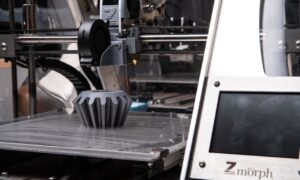Are you prepared to embark on an exhilarating journey into the realm of collaborative bioengineering and biotechnology, where innovation knows no limits? In this blog post, we will delve into the captivating world of pushing boundaries, as scientists and engineers unite to unlock boundless opportunities. From pioneering medical treatments to designing sustainable solutions that break new ground, brace yourself for an exploration that promises to kindle your curiosity and spark your imagination. Prepare to witness the impact of collective intellects propelling the frontiers of science welcome to a future teeming with limitless potential!
Introduction
Understanding Bioengineering and Biotechnology
Biotechnology, on the other hand, is a branch of biology dedicated to harnessing living organisms and their products for human benefit. This includes the utilization of microorganisms for food and drug production, as well as environmental remediation. Biotechnology also encompasses genetic modification of plants and animals to create novel strains with desirable characteristics.
While bioengineering and biotechnology are closely related and often studied in conjunction, they differ in their primary focus and application. Bioengineering concentrates on applying engineering principles to biological systems, resulting in innovations like medical devices, sustainable food and drug production methods, and eco-friendly pollution mitigation solutions.
In contrast, biotechnology centers on utilizing living organisms and their products to create practical goods and services. This encompasses activities ranging from cheese production with bacteria to generating biofuels from algae. Biotechnology firms may also engage in the development of pharmaceuticals or genetic enhancement of crops for improved traits. Both bioengineering and biotechnology hold significant promise, offering avenues to enhance human health, develop sustainable energy sources, and optimize food production.
Advantages of Collaborative Endeavors in Bioengineering and Biotechnology
The collaboration between bioengineering and biotechnology offers a myriad of benefits, making it a compelling endeavor for multiple reasons:
Enhanced Efficiency: Collaborative efforts often yield increased efficiency as multiple parties pool their ideas and resources. This synergy results in streamlined workflows and accelerated progress.
Fostering Creativity: Collaboration fosters creativity by encouraging team members to bounce ideas off one another. The dynamic exchange of thoughts can lead to novel and innovative solutions that may not have arisen independently.
Heightened Productivity: The heightened efficiency and creativity arising from collaboration translate into overall greater productivity. Effective teamwork allows organizations to achieve more within shorter timeframes, a boon for any endeavor.
Improved Morale: Jointly working toward shared objectives can elevate team morale. This sense of camaraderie and common purpose fosters a positive work environment that employees look forward to daily.
Strengthened Relationships: Collaboration often cultivates stronger interpersonal relationships among team members. Effective communication and trust-building become integral, contributing to solid and enduring connections.
Challenges Encountered in Collaborative Initiatives
Collaborating between bioengineering and biotechnology fields is not without its challenges. Communication obstacles may surface due to technical jargon or specialized language that is not universally understood. Divergent goals and areas of expertise among team members can lead to conflicts or a lack of focus. Integrating novel technologies into existing systems may prove challenging, and regulatory hurdles might need to be surmounted. Nevertheless, the potential advantages of collaborative endeavors outweigh these challenges, making it imperative to work together to devise innovative solutions to pressing global issues.
Additionally, the differing research approaches between the two fields can complicate collaboration. Bioengineers may adopt an analytical problem-solving approach, while biotechnologists may adopt a holistic perspective. It is essential for all team members to remain open to mutual learning and finding common ground to achieve success.
Illustrations of Collaborative Ventures
Numerous collaborative projects in bioengineering and biotechnology serve as prime examples of the synergistic power of teamwork. One noteworthy endeavor is the Human Genome Project, a large-scale international initiative to sequence the human genome. Similarly, the International HapMap Project represents a global effort to map human genetic variation.
Other instances of collaborative projects in this domain encompass the Cancer Genome Atlas, an international endeavor to map cancer cell genomes, and the 1000 Genomes Project, a worldwide initiative to sequence genomes from diverse populations. Furthermore, the Human Microbiome Project is a collaborative undertaking aiming to enhance understanding of the human microbiome, comprised of billions of bacteria and microorganisms residing within and on our bodies.
The Future of Bioengineering and Biotechnology
In the dynamic field of bioengineering and biotechnology, anticipating the next major breakthrough is pivotal. This involves staying current with the latest research, developments in both fields, and technological advancements that could reshape their practice. For instance, the increasing accessibility and popularity of 3D printing could revolutionize the manufacturing of medical devices. Additionally, advances in DNA sequencing and genetic editing may drastically transform disease treatment approaches.
Furthermore, considering the evolution of bioengineering and biotechnology is essential. As our knowledge of the human body and its functions deepens, new avenues for repairing or replacing damaged tissues and organs may emerge. Novel applications of cells and biomaterials may yield entirely new products. The scope of possibilities is truly boundless.
Finally, as these fields continue to progress, ethical considerations take on increased significance. Developing technologies must be employed responsibly, serving the benefit of all living entities. This requires vigilance regarding safety risks and ensuring that new products or treatments respect individual rights.
Conclusion
Bioengineering and biotechnology, while distinct, possess immense potential when combined through collaboration. By pushing the boundaries in these fields, we unlock a world teeming with opportunities for advances in medicine, technological innovation, environmental sustainability, and more. Collaboration between these disciplines is vital, as each contributes unique expertise to the table. By pooling their talents, bioengineers and biotechnologists have the capacity to revolutionize numerous industries and pioneer innovations that benefit humanity as a whole.



































